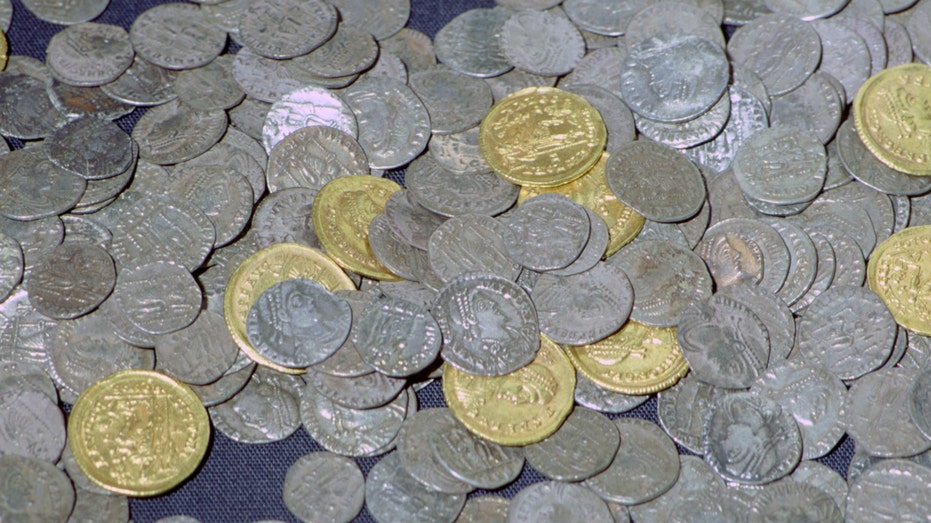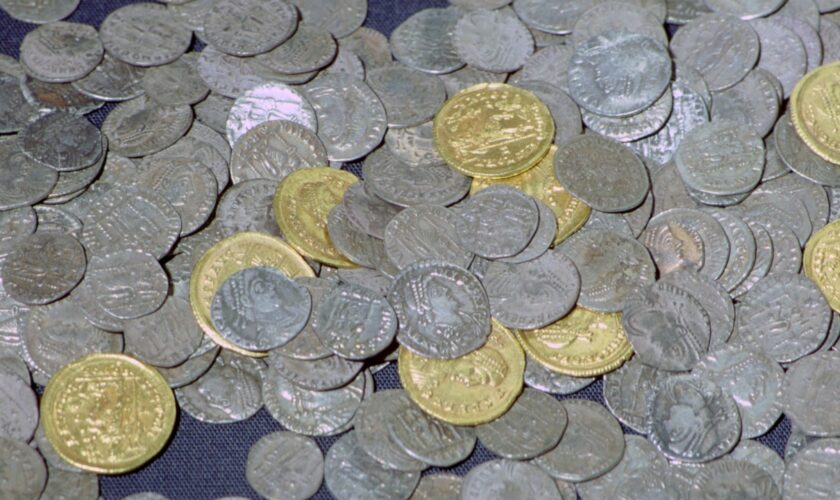
The Hoxne Hoard is one of Britain’s unique archaeological finds, not just by its value, but also by how it was found.Various sources note the Hoxne Hoard as the largest hoard of Roman treasure ever found in Britain. The collection of treasures is heavily made up of gold and silver coins, though there are other objects, such as tableware and jewelry that were also found. How this collection of ancient treasures was found adds to its uniqueness. SANXINGDUI RUINS WERE DISCOVERED ACCIDENTALLY BY A FARMER; HAS SINCE BEEN THE SITE OF OVER 60K RELICSOn Nov. 16, 1992, Eric Lawes was scouring a field in Hoxne village in Suffolk, not on the hunt for hidden treasure, but simply looking for a hammer that had been lost on the land. Lawes was scanning the area with his metal detector, when he came across a small portion of the treasures within what would become the Hoxne Hoard. After shoveling up some of the silver spoons and gold coins he found, he quickly reported his find to be properly excavated. Lawes was awarded £1.75 million for his find, which he shared with the farmer who owned the land the treasures were discovered on, according to the Smithsonian Magazine. THE 4,000 ITEMS IN THE STAFFORDSHIRE HOARD MAKE IT THE LARGEST COLLECTION IN HISTORY OF ITS KINDThe very next day, the Suffolk County Council Archaeology Service (SCCAS) was on the scene, according to the World History Encyclopedia. The gold and silver artifacts part of the Hoxne Hoard weigh around 60 pounds in total, according to Ancient Origins. There are around 15,000 Roman coins as part of the collection, per The British Museum, where many of the items are displayed today. The items were buried in the 5th century A.D. Other unique finds include pieces of jewelry, like a body chain, six necklaces, three finger rings and gold bracelets, according to the source. MOM, SON DIG UP ANCIENT OBJECT OFTEN FOUND NEAR BURIAL GROUNDS WHILE GARDENINGEven though the Hoxne Hoard is heavily made up of coins, one of the best-known treasures that was found was the “Empress” pepper pot. This pot was one of four that were excavated from the site, according to The British Museum. The pepper pot is intricately formed to represent a woman. Additionally, there were many tableware items that were part of the hoard, including a set of 19 spoons, in good condition, that were decorated with marine themes, according to The British Museum. Archaeologists believe that the Hoxne Hoard was buried no later than 450 A.D., according to Ancient Origins. At the end of the 4th century A.D., the western Roman Empire was in a place of uncertainty, with Roman soldiers exiting Britain, leaving citizens to fend for themselves. While experts have posed varying hypotheses as to why the hoard was buried, one common suggestion is that it was done for protection, with the intent of the owners collecting their precious items once again. In the case of the Hoxne Hoard, the items were never retrieved by their owners. Today, the Hoxne Hoard is on display at the British Museum in London. The display contains many of the coins, jewelry and tableware, as well as Lawes’ hammer, which he was originally looking for when he stumbled upon the far more significant discovery.
Source link : https://www.foxnews.com/world/history-hoxne-hoard-largest-collection-roman-treasure-found-britain
Author :
Publish date : 2024-10-09 15:34:52
Copyright for syndicated content belongs to the linked Source.
The history of the Hoxne Hoard, the largest collection of Roman treasure found in Britain



